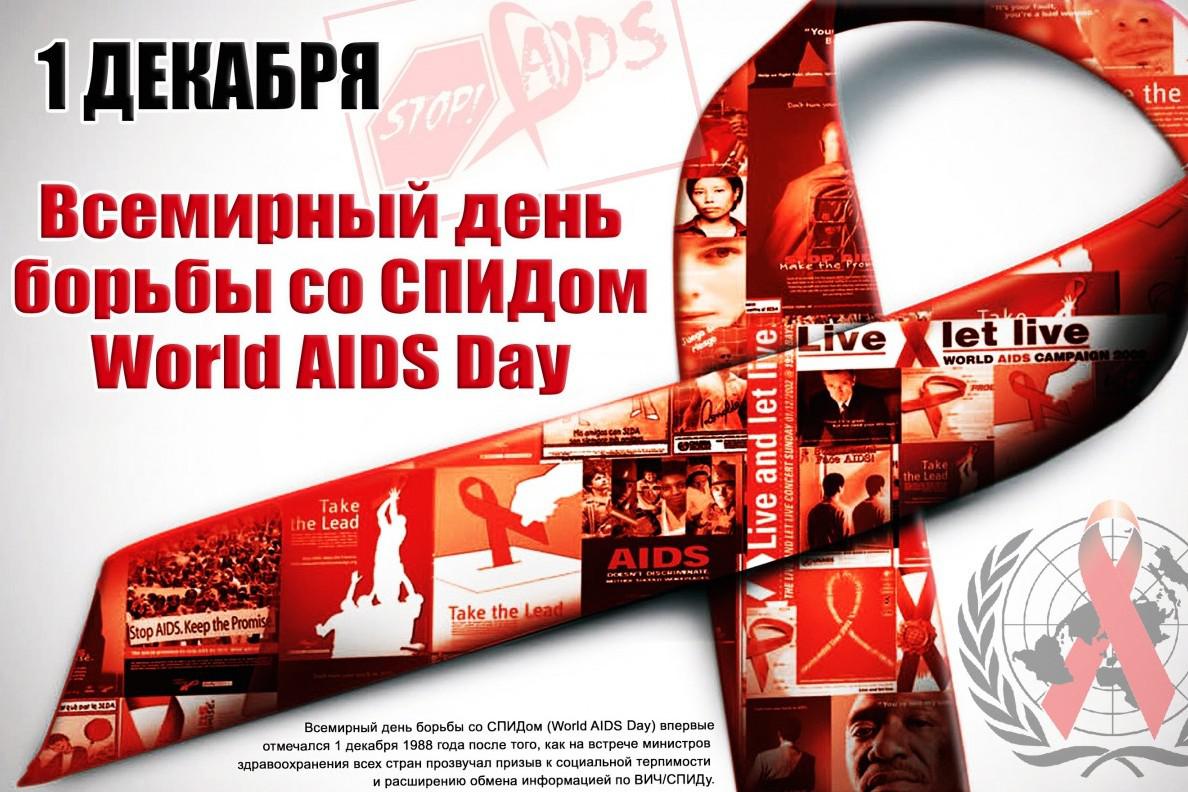Every year on 1 December, in accordance with the decision of the World Health Organisation (WHO) and the decision of the UN General Assembly adopted in 1988, the International AIDS Day. This year, it is held under the slogan: “International solidarity – shared responsibility!
The aim of World AIDS Day is to raise global awareness about HIV/AIDS, to intensify society’s efforts to counter the epidemic and to demonstrate international solidarity in the face of the pandemic. The organised efforts of all public and private institutions are aimed at supporting programmes to prevent the spread of HIV/AIDS, providing training and information on all aspects of HIV/AIDS.
On this day, millions of people around the world come together to celebrate the progress made in the fight against the epidemic and to reaffirm their readiness to end it.
It has become a tradition to pin a red ribbon on clothes, which was invented by the artist Frank Moore in 1991 as a sign of sorrow and memory of the millions who have passed away, a sign of solidarity with those who are HIV-positive, a sign of understanding that AIDS has no borders, no nationalities, no gender and no age.
HIV infection remains a pressing issue around the world.
The human immunodeficiency virus was discovered almost half a century ago. The final stage of HIV infection is AIDS. It begins to be talked about when a person infected with HIV develops infectious diseases due to the ineffective functioning of the immune system, which has been destroyed by the virus. HIV is a chameleon among other viruses, scientists say. It changes and mutates all the time. The structure of its surface is three-dimensional. At the same time, part of it is covered with a sugar shell. This is what blocks the vaccine’s action.
Robert Gallo, researcher: – Let’s imagine a golf ball with lots of clubs coming out of it. They must interact with certain substances, molecules, on the surface of an infected cell. If my fist is a cell, then each joint is a different molecule on its surface. These sticks must find one specific molecule and immediately a second molecule. This is therefore a rather complicated process of how HIV gets inside the cell.
But there is no need to be afraid or restrict communication with HIV-positive people. HIV cannot be infected through everyday contact or kissing. The infection is only transmitted through sexual contact and blood. Today, people with HIV can live a long and fulfilling life, and even have children. Most of them take medicines that do not cure, but help maintain their health.
Source: https://24.kz/





